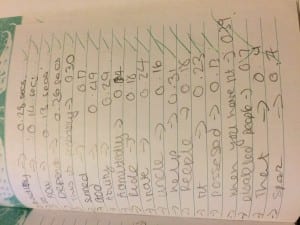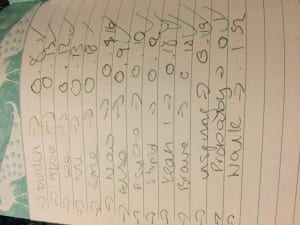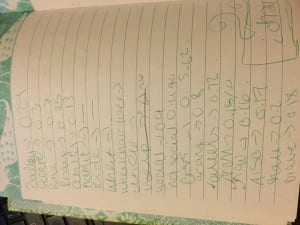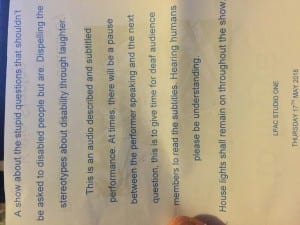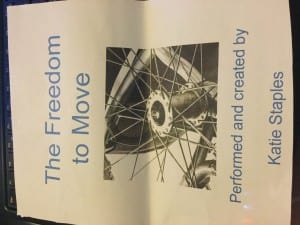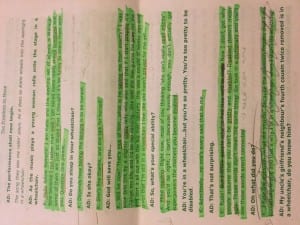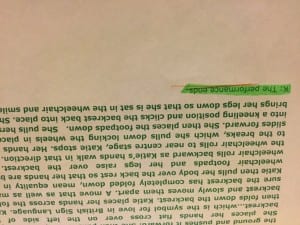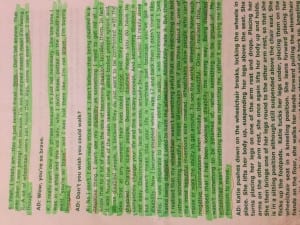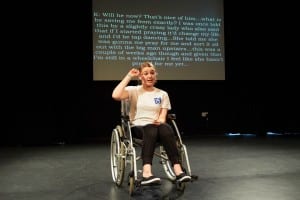Due to the fact that I am not fluent in British Sign Language and that some deaf people do not use sign language, subtitling became an important factor in my performance. It was something that I had planned to use from the beginning and was perhaps that most complex element within my performance. Creating the subtitling itself was not that hard to due however getting the timing right was not a simply task for the timing not only had to fit with how long it would take me to say the lines but also to how long it takes someone to read the subtitles.
The first thing I did was time how long it would take me to read each of the lines
Once the subtitling was to these times I then retimed and tested how long it’d take someone who was deaf to read the subtitling. Some of the subtitling slides were quite wordy, which means that it takes longer to read the slides then it does for me to speak the words. When testing the slides out on someone who was deaf it was found that they needed longer than I had timed to read some of the slides especially because they also wanted to watch me sign and “act” the lines as well.
This lead to me changing the audio, getting rid of a few questions to fit the time limit, and giving more time on certain slides so that they could be read with ease. This did mean, however, that for hearing audience members there were sometimes moments of pauses as I had finished speaking but deaf audience members had not finished reading. Now I personally don’t feel that this is an issue. I could not really slow my speech down anymore to try and force the timings to match so instead I just let there be moments were it was slightly paused.
I am aware that hearing audience members my not have liked the pauses and may have found them annoying which is why I make it clear why they are needed in the programs that I left on the seats.
Although I used subtitling I also wanted to still use sign language. Sign language is a beautiful language that goes unnoticed to most non-disabled people so I really wanted to include it. As aforementioned I am not fluent in sign language which is why I could not sign the whole way through the piece so instead I decided to chose certain words that were important to the sentence or to the reply and sign those words to emphasis their importance. Wheelchair, for example, was always signed as was disabled, disability, questions and change. Wheelchair was a sign I wanted to use from the beginning. My wheelchair is very symbolic to my identity and to the identity of the disabled community. A wheelchair is considered the most commonly recognised symbol of disability and tends to be the image most people associate with the word disabled. As I make clear in my show, I believe that my wheelchair is a beautiful thing and the sign I feel emphasises this from the beginning. So the next step was to go through the script and pick out the important words in each of the answers and then sign those words or phrases.
The words underlined in orange were the words I believed were important and therefore chose to sign.
^ Sign for “Crazy” in British Sign Language.
